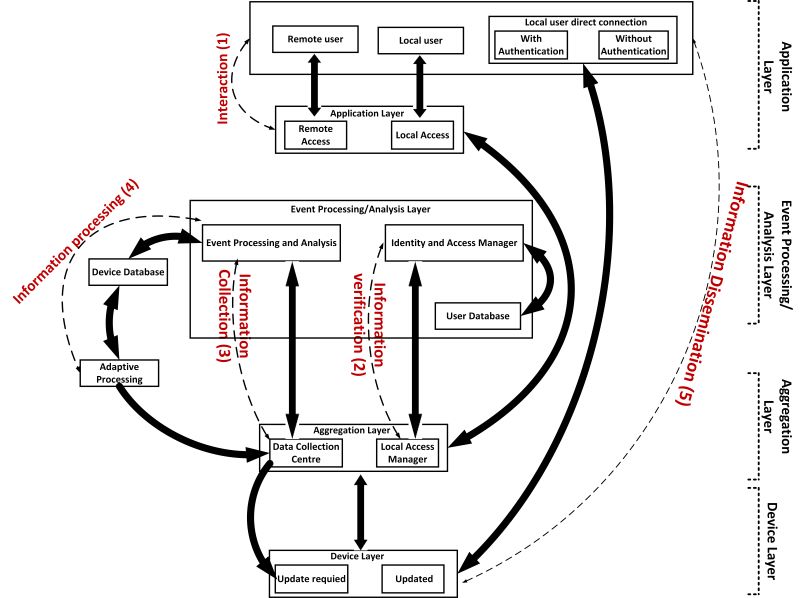Privacy Engineering in Smart Home (SH) Systems: A Comprehensive Privacy Threat Analysis and Risk Management Approach
Addressing privacy concerns in Smart Home (SH) systems is essential, however, more research is needed in analyzing and evaluation of privacy threats for effective risk management. Although there has been some research on privacy in SH, most existing research primarily focuses on user privacy, while often neglecting the importance privacy of device data especially device identity privacy. This oversight can significantly impact overall user privacy within the SH system. This study incorporates privacy engineering (PE) principles into SH systems, considering user and device data privacy. We have developed a comprehensive reference model for a typical SH system, shown in Figure 1.

Using the initial stage (Model the system) of the LINDDUN PRO PE framework for privacy engineering, we present a data flow diagram (DFD) based on this reference model to enhance our understanding of how SH systems operate.
We utilize the LINDDUN PRO threat model to identify potential privacy threats and conduct a privacy threat analysis (PTA) which the second stage (Elicit threat). After this, we conduct a privacy impact assessment (PIA) to manage privacy risks by prioritizing threats based on their likelihood of occurrence and potential impact. Finally, we recommend various privacy-enhancing techniques (PETs) that can help mitigate these threats which concluded the last stage (manage threats) of the LINDDUN PE PRO framework.
This approach expresses the correlation between Privacy engineering (PE), privacy threat analysis (PTA), and privacy impact assessment (PIA).
Alalade, E. D., Mahyoub, M., & Matrawy, A. (2024). Privacy Engineering in Smart Home (SH) Systems: A Comprehensive Privacy Threat Analysis and Risk Management Approach. arXiv preprint arXiv:2401.09519.